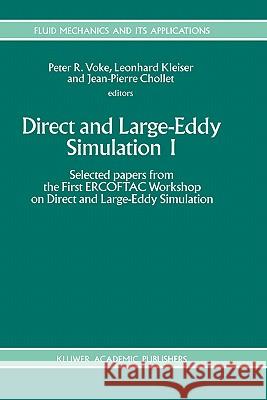Direct and Large-Eddy Simulation I: Selected Papers from the First Ercoftac Workshop on Direct and Large-Eddy Simulation » książka
Direct and Large-Eddy Simulation I: Selected Papers from the First Ercoftac Workshop on Direct and Large-Eddy Simulation
ISBN-13: 9780792331063 / Angielski / Twarda / 1994 / 434 str.
Direct and Large-Eddy Simulation I: Selected Papers from the First Ercoftac Workshop on Direct and Large-Eddy Simulation
ISBN-13: 9780792331063 / Angielski / Twarda / 1994 / 434 str.
(netto: 768,56 VAT: 5%)
Najniższa cena z 30 dni: 771,08
ok. 22 dni roboczych
Bez gwarancji dostawy przed świętami
Darmowa dostawa!
It is a truism that turbulence is an unsolved problem, whether in scientific, engin eering or geophysical terms. It is strange that this remains largely the case even though we now know how to solve directly, with the help of sufficiently large and powerful computers, accurate approximations to the equations that govern tur bulent flows. The problem lies not with our numerical approximations but with the size of the computational task and the complexity of the solutions we gen erate, which match the complexity of real turbulence precisely in so far as the computations mimic the real flows. The fact that we can now solve some turbu lence in this limited sense is nevertheless an enormous step towards the goal of full understanding. Direct and large-eddy simulations are these numerical solutions of turbulence. They reproduce with remarkable fidelity the statistical, structural and dynamical properties of physical turbulent and transitional flows, though since the simula tions are necessarily time-dependent and three-dimensional they demand the most advanced computer resources at our disposal. The numerical techniques vary from accurate spectral methods and high-order finite differences to simple finite-volume algorithms derived on the principle of embedding fundamental conservation prop erties in the numerical operations. Genuine direct simulations resolve all the fluid motions fully, and require the highest practical accuracy in their numerical and temporal discretisation. Such simulations have the virtue of great fidelity when carried out carefully, and repre sent a most powerful tool for investigating the processes of transition to turbulence."











